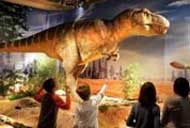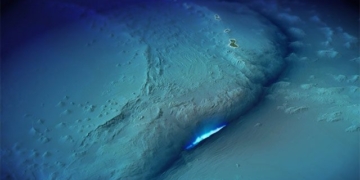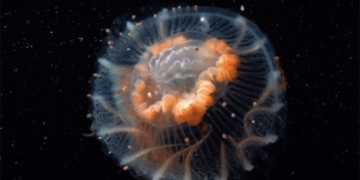 Fossilized dinosaur dung in India reveals that gigantic herbivorous dinosaurs known as titanosaurs once grazed on grass.
Fossilized dinosaur dung in India reveals that gigantic herbivorous dinosaurs known as titanosaurs once grazed on grass.
Very few scientists believed that dinosaurs chewed grass, as there was no evidence indicating that grass existed during that time. They thought the grinding teeth found in some dinosaur fossils were used to chew on other types of vegetation, such as trees, similar to modern beavers.
Therefore, when Caroline Stromberg at the Swedish Museum of Natural History received fossilized dinosaur dung images from Vandana Prasad at the Paleobotanical Institute in Lucknow, India, she hardly expected to find grass fragments within.
“I was incredibly surprised to discover grass, and even more astonished to find that it was highly diverse,” Stromberg said.
Prasad’s team analyzed the 65-million-year-old fossilized dung of a giant herbivorous dinosaur. They identified plant species such as sesame, pine trees, and some others that thrived during the Late Cretaceous period.
They sent several images and samples to Stromberg, who recognized small, poorly defined silica structures known as phytoliths. “It is undeniable, this is indeed the trace of grass,” stated Dolores Piperno, a paleobotanist at the Smithsonian Institution in Washington, D.C. “Not only that, they come from different species of grass. This is the first clear evidence showing that grass originated from the Late Cretaceous and was quite diverse.”
Stromberg noted that the phytoliths from the grass resembled those found in some rice plants today. The findings also suggest that some ancient mammals may have also grazed on grass.
M.T. (according to Reuters)


















































